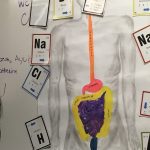Questions about the role that micro plastics are playing in marine ecosystems – learn more by reading, thinking and questioning.
Scientists have measured the amount of micro plastic in the marine environment to be 3500 pieces per cubic metre.
Micro plastics are so small that they cannot be simply sieved out of the water.
Microplastics are not dissolved in ocean water. Micro plastics are micrometer sized pieces of plastic debris from fabric, plastic overwrap and manufacturing processes.
“Aside from clogging up the digestive tracts of marine life, plastic also has a potentially more sinister side: it tends to adsorb pollutants like PCBs from the water column, thus acting as a potential vector to move pollutants from the water column into the food chain. Aside from potentially devastating effects on marine life, human health may also be compromised. For example, one study found that European consumers could be ingesting approximately 11,000 microplastic particles annually through shellfish consumption, with unknown impacts on human health. Tiny plastics are a huge problem because (1) their high surface-area-to-volume ratio and chemical makeup increases the likelihood of pollutant adsorption, (2) they are ubiquitous and creatures that eat particles in that size fraction tend not to be the brightest on the planet (thus lacking strong discriminatory powers), and (3) there is no known way to clean them up.”
“The small particle size of microplastics means that they can’t just be sieved out of the water without also sieving out all of the marine life (like the above planktonic snail or juvenile mussel) or other natural particles (like the above bit of pumice, on which marine life may be living). In addition, while many plastics float, many other plastic particles are neutrally or negatively buoyant and are found within the water column or on the ocean bottom.”
Learn more about the environmental threat to marine ecosystems.



